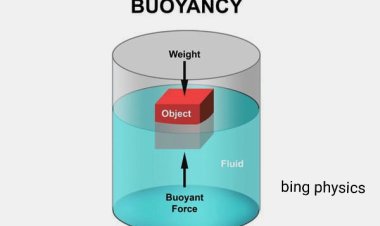Buoyancy, a fundamental principle in physics, plays a crucial role in our everyday lives, influencing objects’ ability to float or sink in fluids. This phenomenon, often associated with ships sailing on water, has far-reaching implications in various fields. In this blog post, we will delve into the basics of buoyancy, unraveling the science behind why some objects effortlessly stay afloat while others succumb to the depths.
### The Archimedes’ Principle:
At the heart of buoyancy lies Archimedes’ principle, a concept articulated by the ancient Greek mathematician Archimedes. The principle states that any object submerged in a fluid experiences an upward force equal to the weight of the displaced fluid. This force, known as the buoyant force, acts opposite to the gravitational force pulling the object downward.
### Density Dynamics:
To comprehend buoyancy, one must understand density – the mass of an object per unit volume. Objects with lower density than the fluid they are in displace an amount of fluid equal to their own weight, leading to buoyancy. Conversely, objects denser than the fluid will sink.
### Floating and Sinking:
Consider a ship made of steel. Despite being heavy, its design ensures a lower average density than water, allowing it to float. This is achieved by distributing the mass in a way that minimizes overall density. On the flip side, a dense material like a rock will sink as it displaces a volume of water with a weight less than its own.
### Calculating Buoyancy:
The buoyant force can be calculated using Archimedes’ principle and the formula:
\[ F_{\text{buoyant}} = \rho_{\text{fluid}} \cdot V_{\text{displaced}} \cdot g \]
Here, \( \rho_{\text{fluid}} \) is the density of the fluid, \( V_{\text{displaced}} \) is the volume of fluid displaced, and \( g \) is the acceleration due to gravity.
### Real-world Applications:
Buoyancy finds application beyond maritime adventures. It’s the reason hot air balloons rise, helium balloons float, and submarines control their depth. Understanding buoyancy is essential in fields ranging from engineering to biology, shaping the design of countless devices and structures.
### Conclusion:
Buoyancy, an age-old principle, continues to influence the way we interact with the world. From the marvel of a ship gliding across the ocean to the simple pleasure of watching a balloon ascend into the sky, the science of buoyancy is a testament to the elegant simplicity of nature’s laws. As we navigate the seas of physics, buoyancy remains a steadfast guide, reminding us that, in the fluidity of our understanding, certain principles will always keep us afloat.
